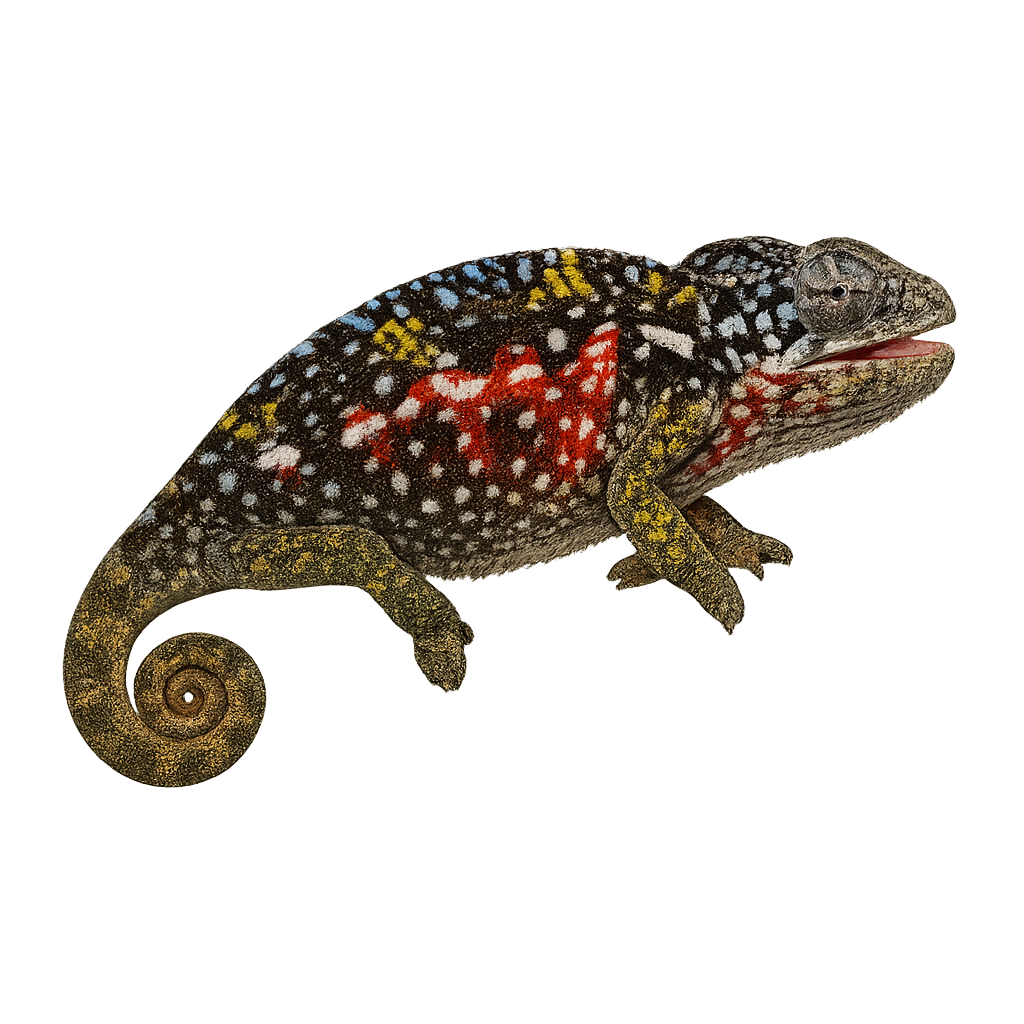Your wildlife photography guide.
Explore the carpet chameleon in detail, study its behavior, prepare your shots.
Where to observe and photograph the carpet chameleon in the wild
Learn where and when to spot the carpet chameleon in the wild, how to identify the species based on distinctive features, and what natural environments it inhabits. The WildlifePhotographer app offers tailored photography tips that reflect the carpet chameleon’s behavior, helping you capture better wildlife images. Explore the full species profile for key information including description, habitat, active periods, and approach techniques.
Carpet Chameleon
Scientific name: Furcifer lateralis

IUCN Status: Least Concern
Family: CHAMAELEONIDAE
Group: Reptiles
Sensitivity to human approach: Suspicious
Minimum approach distance: 2 m
Reproduction period: March to April
Incubation: 60–90 jours
Births: March to April
Habitat:
humid forests, scrub areas, agricultural zones
Activity period :
Active during the day when temperatures are favorable, often seen basking in the sun.
Identification and description:
The Furcifer lateralis, or carpet chameleon, is a species of chameleon endemic to Madagascar. This reptile is particularly admired for its vibrant colors and ability to change hues depending on its environment or mood. It typically measures between 17 and 25 cm in length, including its tail. Males often display more vivid colors than females, with distinct band patterns. This chameleon primarily inhabits humid forests and scrub areas, but can also be found in agricultural zones. It mainly feeds on insects, capturing them with its extendable tongue. Although relatively common, deforestation threatens its natural habitat.
Recommended lens:
Macro – adjust based on distance, desired framing (portrait or habitat), and approach conditions.
Photography tips:
To photograph the carpet chameleon, it is advisable to use a macro lens to capture the details of its scales and vibrant colors. Approach slowly to avoid startling it, maintaining a distance of at least 2 meters. Natural light is ideal to highlight its changing hues. Opt for early morning or late afternoon when the light is soft. Be patient and wait for it to remain still to get sharp shots.
The WildlifePhotographer App is coming soon!
Be the first to explore the best nature spots, track rutting seasons, log your observations, and observe more wildlife.
Already 1 431 wildlife lovers subscribed worldwide

